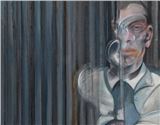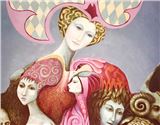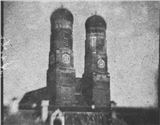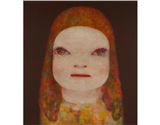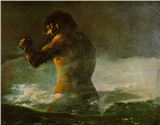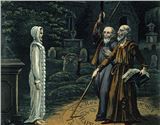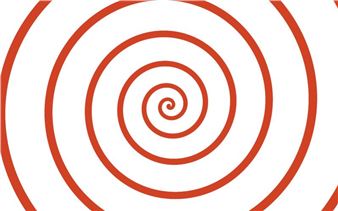The Plot Thickens: Storytelling In European Print Series
Long before comics and graphic novels, artists used pictures to tell stories. This exhibition presents six series of etchings, lithographs, and woodcuts that do just that. The tales told include the Shakespearean tragedies Hamlet and King Lear, the biblical Parable of the Prodigal Son, and a purely pictorial dream sequence featuring a glove. Two more series illustrate sets of abstract principles—the Christian notion of the seven deadly sins and a German legal code from the 1400s.
The six series are from the nineteenth and twentieth centuries. Stylistically they range from the emotion- and action-packed Romanticism of Eugène Delacroix to the highly detailed realism of James Tissot to the gestural near-abstraction of Oskar Kokoschka.
Over the history of printmaking, artists developed a variety of techniques, each of which has its own visible characteristics and expressive qualities. For example, lithography is closest to freehand drawing; etching lends itself to delicate, detailed work; and woodcuts often look rough and crude. Even a glance at the six series exhibited here reveals these distinct differences.

Recommended for you
Long before comics and graphic novels, artists used pictures to tell stories. This exhibition presents six series of etchings, lithographs, and woodcuts that do just that. The tales told include the Shakespearean tragedies Hamlet and King Lear, the biblical Parable of the Prodigal Son, and a purely pictorial dream sequence featuring a glove. Two more series illustrate sets of abstract principles—the Christian notion of the seven deadly sins and a German legal code from the 1400s.
The six series are from the nineteenth and twentieth centuries. Stylistically they range from the emotion- and action-packed Romanticism of Eugène Delacroix to the highly detailed realism of James Tissot to the gestural near-abstraction of Oskar Kokoschka.
Over the history of printmaking, artists developed a variety of techniques, each of which has its own visible characteristics and expressive qualities. For example, lithography is closest to freehand drawing; etching lends itself to delicate, detailed work; and woodcuts often look rough and crude. Even a glance at the six series exhibited here reveals these distinct differences.
Artists on show
Contact details

Related articles
The High Museum of Art, closed since March 12 by the Covid-19 pandemic, will reopen for museum members and frontline workers on July 7 and begin welcoming the public on July 18.
Jerry Cullum’s Notebook is a monthly survey that highlights some of the more notable art + design happenings in metro Atlanta.

 ARTISTS
ARTISTS
